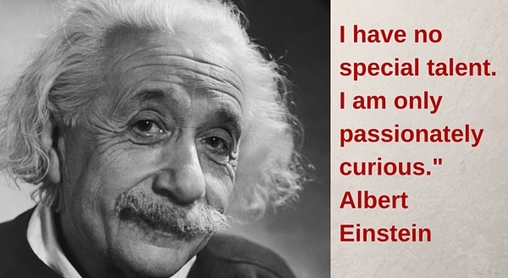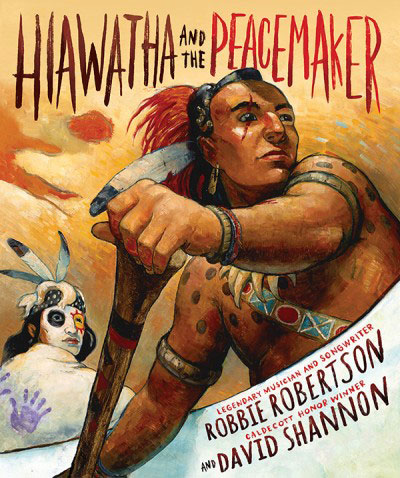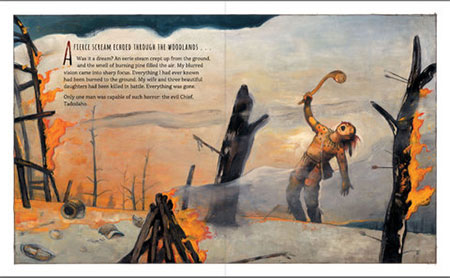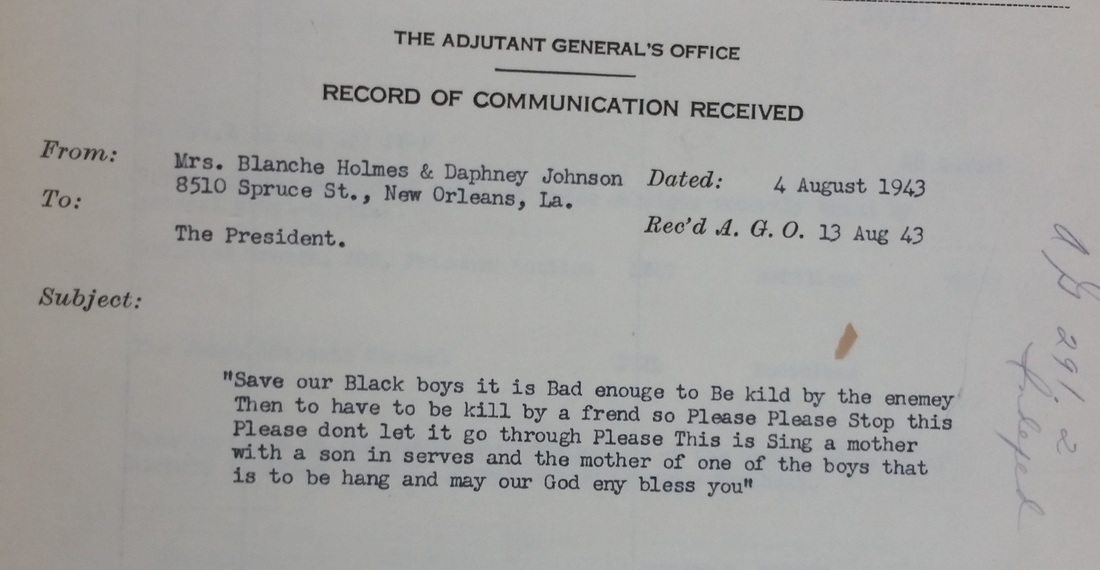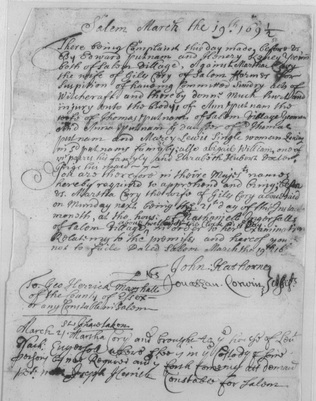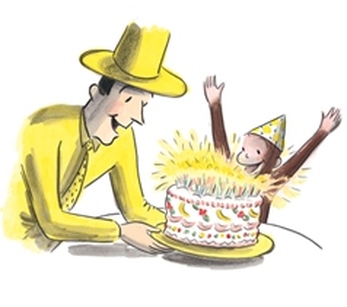 The century-old proverb, curiosity killed the cat, is usually dusted off and pronounced by an adult trying to hide something from a child. Whether it's snicker-doodles in the cookie jar or a shameful family secret, the message is stop right there. Story books about Curious George have been telling kids for 75-years--curiosity will get you in trouble. I'd rather see curiosity as fuel for the creative mind, a pathway to learning, a catalyst for change. I've always had a strong a need to know, which may have led to my career as a news reporter, and more recently, writing non-fiction for kids. Although, I must admit my curiosity has gotten me into trouble a time or two. My quest for facts can go too far. It never served me well to grill my kids for information when they came home from school. And my husband’s not too keen on me interrupting him to ask questions. Curiosity helps improve relationships, I've had to work at curbing my curiosity to become a better listener, and at the same time, redirecting my inquiries to understand myself better. A subtle probing behind my actions and reactions has turned up a wealth of information about how I tick. Sharpening my curiosity helps me improve relationships, reduce stress and find more enjoyment in life. I came up with this list of tips from my own practice. In my experience, cultivating a gentle curiosity contributes to better mental health and happiness. 5 Tips for Better Living Through Curiosity
Being curious is a requirement for my work as a writer, but we're all born curious, and we can all benefit from making a conscious effort to explore, learn and discover. So please share your tips for expanding curiosity in the comment section. Thanks! Once in a while you find a book that you want to buy for everyone you know. Hiawatha and the Peacemaker strikes me that way. I thought it ironic that I stumbled upon this book in the middle of great debate about immigration in America, about how best to confront terrorism and about how to be most true to our democratic ideals. Hiawatha lived in a time of war, when violence could strike without warning and without mercy. His people, the Iroquois ranged across what is now New York State, Ontario and Quebec long before European immigrants arrived. The story opens with Hiawatha mourning his wife and three daughters. They'd been killed in an attack on his village and everything he cared about had been burned to the ground. Vivid illustrations by David Shannon evoke emotion throughout the story. Hiawatha could think of nothing but revenge, until a stranger showed up and told him of the Great Law of Peace. “Fighting among our people must stop. We must come together as one body, one mind, and one heart.” Hiawatha was skeptical, but agreed to go to his people, the Mohawk, and help the Peacemaker present the Great Law. The Clan Mothers nodded at this idea of becoming one family, but the War Chief argued that the Onondaga chief was too strong, too violent and the Mohawk must remain ready to fight. 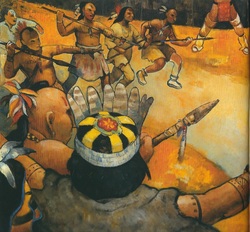 Hiawatha and the Peacemaker left the Mohawk, traveling to carry the message to the Cayuga, the Oneida, the Seneca and the Onondaga. He faced down hostile warriors, suspicion, and his own hatred, anger and pain. With the help of the Peacemaker Hiawatha was healed of his desire for revenge and learned forgiveness. Eventually, they succeeded in bringing the five nations together to lay down their weapons and trust peace. The Five Nations of the Iroquois formed a confederacy on the Great Law of Peace, thought to be the oldest participatory democracy on earth. Benjamin Franklin, John Hancock and Thomas Jefferson were influenced by this peaceful union's self-government. The author of the book, Robbie Robertson wrote the story from his memory of hearing it as a child from an Elder wisdom-keeper on the reservation. Robertson is of Mohawk and Cayuga heritage. 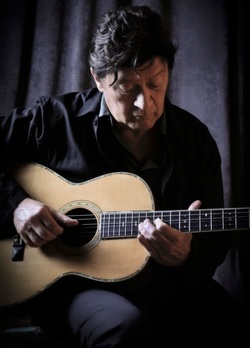 According to Robertson, Henry Wadsworth Longfellow mixed up another man with the real Hiawatha in his poem, so don't look for Gutche Gumee in this book. This book is not his first foray into the arts. Robinson has a long and distinguished career in music for which he's been inducted into the Rock & Roll Hall of Fame, given a Grammy Lifetime Achievement Award, landed on Rolling Stone magazine’s lists of greatest artists and greatest guitar players of all time, as well as collaborated with filmmaker Martin Scorsese, and produced albums by artists like Van Morrison and Neil Diamond. I can't leave this story without mentioning that in the Iroquois Federation men and women shared power. A Clan Mother Jikonhsaseh was instrumental in forming the democracy.  Thanks to Author Brandon Marie Miller for guest posting here this week, filling in while I recover from my six-day research trip to Washington D.C. Brandon is an award-winning author of nine titles on U.S. history topics. Her story about a woman accused of witchcraft and hanged, touches on an experience I've been thinking a lot about lately. Being completely helpless at the whim of people who want to kill you. My research turned up a letter to President Roosevelt from a woman whose son is set to be hanged by the U.S. Army. Just thinking of this kind of helplessness makes me short of breath. You've probably heard the name of Eddie Slovak, the white soldier executed for deserting in WWII. They even made a movie about him. Seen any movies about a black soldier executed? Out of 70 soldiers court-martialed and executed in Europe during the war years, 55 of the men were black. Blacks made of 10 percent of the army. A number of these men were hanged on extremely flimsy testamony. There's some evidence black soldiers were scapegoated for the crime of rape to save the reputation of the US Army during WWII. In her new book, Women of Colonial America, Brandon Marie Miller writes about a woman facing similar circumstances. The Courage of Martha Corey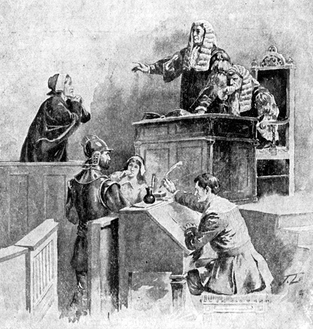 Martha Corey on trial Martha Corey on trial She says, "to be accused of a crime-- with your life hanging in the balance-- and have no way to defend yourself, is terrifying. " Brandon knew the ending to Martha Corey's story before she started her research. Martha's name appears on the list of those executed for practicing witchcraft in Salem Village in 1692. Brandon's challenge was to make Martha more than just a name and get readers to care about her. So, how'd you answer that challenge, Brandon? 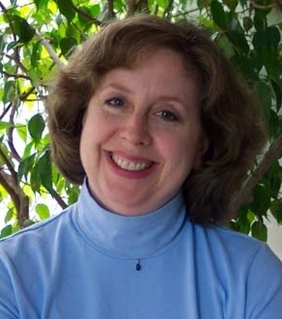 The answer lay in the 300-year-old record of Martha's examination and court depositions. She at first briskly denied the accusations. But as the "afflicted" girls took over the courtroom with their hysterics, I felt her shift to bewilderment, to panic, to despair. My heart ached for Martha, so alone against so many. I felt anger toward the accusers. Only one of the girls later publicly apologized for her role, saying she'd been deluded by the devil. Martha remained true to herself through months of imprisonment. She never attempted to save herself by confessing or accusing others. And in the face of mass hysteria, that took real courage. Three women had already been accused of witchcraft when a constable arrived at the home of Giles and Martha Corey in March 1692. The man carried a warrant for Martha’s arrest, charging she’d “committed sundry acts of Witchcraft.” Since January, witch hysteria had swept Salem Village. A handful of preteen girls and teenage servants made the accusations. Normally, society would scarcely notice these girls. Now, people recorded their every sentence, every move. Older and poorer women proved easy targets. Martha’s arrest shocked people; she was a prosperous farmer’s wife and an elected church member. Twelve-year-old Ann Putnam had first told her parents that Martha appeared to her and tortured her with pinching “and other ways.” When Martha visited the Putnam house Ann fell into a choking fit, her body twisted in agony. 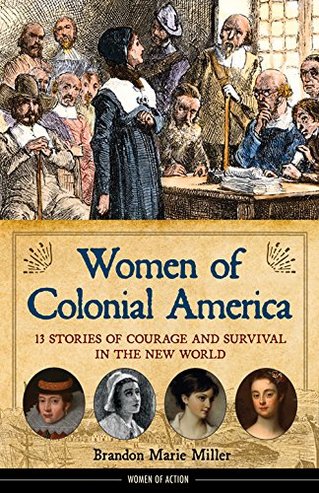 A servant in the household claimed Martha’s apparition beat her with an iron rod. Other girlish voices chimed in over the next few weeks-- Martha hurt them and consorted with the devil. Two days after her arrest Martha appeared before Magistrate John Hathorne in Salem’s packed meeting house. Hathorne’s first words accused her: “You are now in the hands of Authority tell me now why you hurt these persons.” Martha denied she hurt anyone. “I am an innocent person: I never had to do with Witchcraft since I was born,” she answered. “I am a Gospel Woman.” Hathorne soon lost control of the court when “the afflicted” interrupted the proceedings. Abigail Williams pointed toward Martha—“There is a man whispering in her ear.” “We must not believe all that these distracted children say,” Martha told Hathorne. “I saw no body.” Then the accusers fell to the floor, shrieking in pain. Martha must have looked on, helpless and horrified. The judge urged her to confess, adding, “Do you think to find mercy by aggravating your sins?” Martha simply replied, “But I cannot confess.” Martha continued to proclaim her innocence. “What can I do? Many rise up against me.” Nineteen people were hanged after being convicted in the Salem Witch Trials. Thank you, Brandon! I'm looking forward to reading your new book! When I visited the Salem Witch Trial Museum several years ago, they had a wonderful exhibit showing how the accusations of witchcraft fit into a pattern of scapegoating and violence down through the centuries. 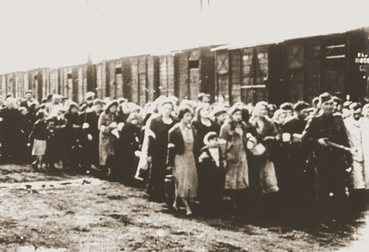 Warsaw Ghetto Deportations - Photo courtesy http://holocaustresearchproject.org Warsaw Ghetto Deportations - Photo courtesy http://holocaustresearchproject.org Of course, a prime example is the the Holocaust, which just so happens to be another topic I've been researching lately. I can't help feeling great gratitude that I get to sleep at night without worrying I'll be targeted by violence. And I can't help thinking about other groups of people here in America and around the world that don't have that luxury. Read about Martha and 13 more courageous Colonial Women here. Check out Brandon's website here... |
I'm fascinated to discover little-known history, stories of people and events that provide a new perspective on why and how things happened, new voices that haven't been heard, insight into how the past brought us here today, and how it might guide us to a better future.
I also post here about my books and feature other authors and their books on compelling and important historical topics. Occasionally, I share what makes me happy, pictures of my garden, recipes I've made, events I've attended, people I've met. I'm always happy to hear from readers in the blog comments, by email or social media. Archives
September 2023
Categories
All
|

